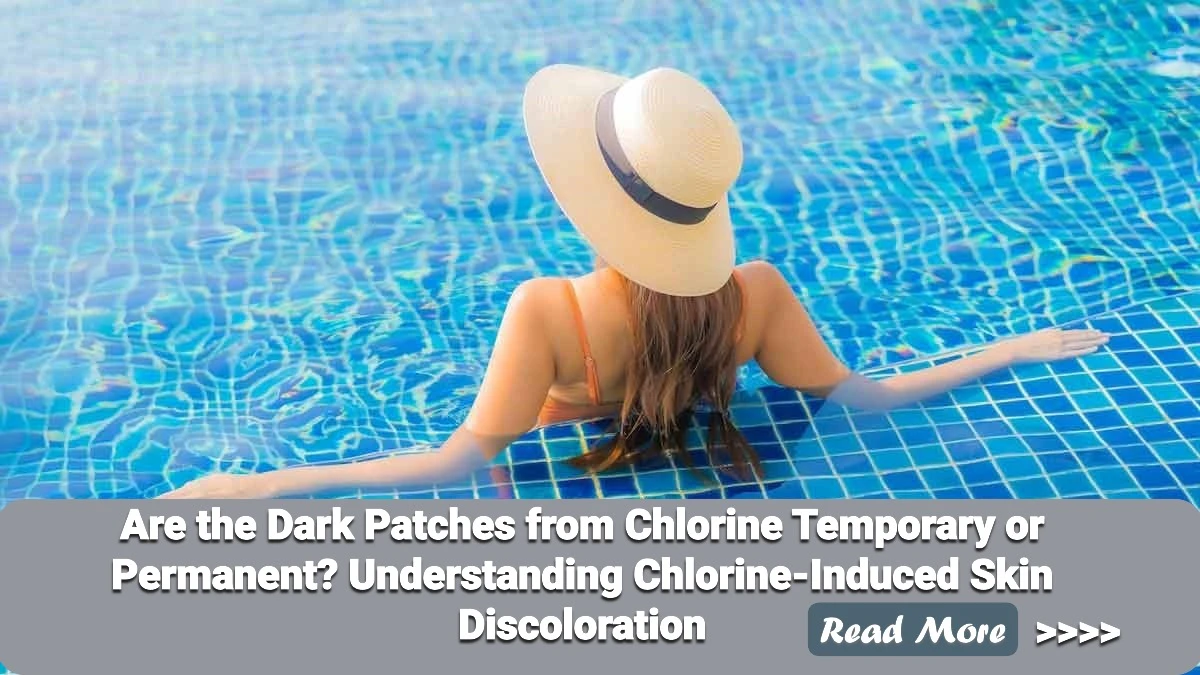Are the Dark Patches from Chlorine Temporary or Permanent? Understanding Chlorine-Induced Skin Discoloration
Are the Dark Patches from Chlorine Temporary or Permanent? Understanding Chlorine-Induced Skin Discoloration
Spending time in chlorinated pools is a favorite pastime for many, especially in hot weather. But for some individuals, regular exposure to chlorine can lead to skin issues—including dark patches or discoloration. These unexpected changes in skin tone raise the question: Are the dark patches caused by chlorine temporary or permanent? Understanding the causes and underlying mechanisms can help determine how serious the issue is and what steps you can take to prevent or treat it.
Why Does Chlorine Affect Skin Tone?
Chlorine is a powerful chemical used to disinfect water in swimming pools and cleaning products. While it serves an important role in hygiene, it can also be harsh on the skin, particularly with frequent or prolonged exposure.
Chlorine can:
-
Strip the skin of its natural oils
-
Disrupt the skin’s barrier function
-
Cause dryness, sensitivity, and irritation
-
Trigger inflammation in sensitive or reactive skin types
When the skin barrier is compromised, the skin becomes more vulnerable to external stressors like UV radiation and pollutants, both of which can lead to hyperpigmentation or dark patches.
Are Chlorine-Induced Dark Patches Temporary?
In most cases, dark patches from chlorine exposure are temporary—especially if they result from irritation, dryness, or inflammation. Once chlorine exposure is reduced and the skin barrier is restored with proper care, the discoloration usually fades over time.
Temporary pigmentation may result from:
-
Post-inflammatory hyperpigmentation (PIH): This occurs after irritation or inflammation, especially in darker skin tones. It can last for several weeks to months.
-
Dryness or peeling: Chlorine-damaged skin may appear dull or darker due to flakiness and uneven tone, but this typically resolves with moisturization and healing.
When Can Dark Patches Become More Persistent?
In some cases, dark patches may become more stubborn or longer-lasting, especially if:
-
The skin is repeatedly exposed to chlorine without proper protection
-
The person has pre-existing pigmentation issues such as melasma or sun damage
-
There is inadequate sun protection, allowing UV rays to deepen the discoloration
-
The skin undergoes chronic inflammation or allergic reactions due to chlorine sensitivity
These more persistent patches may take months to fade or require dermatological treatments like topical brighteners, exfoliation, or chemical peels.
How to Prevent and Treat Chlorine-Induced Dark Patches
Prevention:
-
Apply a barrier oil or moisturizer before swimming to shield the skin.
-
Use broad-spectrum sunscreen (SPF 30 or higher) daily—especially before and after pool exposure.
-
Rinse off immediately after swimming to remove chlorine residue.
-
Moisturize with soothing ingredients like ceramides, aloe vera, or hyaluronic acid.
Treatment:
-
Use gentle exfoliants (like lactic acid or enzyme-based products) to remove dead skin cells.
-
Incorporate brightening agents like niacinamide, vitamin C, or licorice extract.
-
For persistent patches, consult a dermatologist for targeted treatments.
Conclusion
Dark patches caused by chlorine are usually temporary, but their duration depends on your skin type, frequency of exposure, and whether other factors like sun damage are involved. With prompt care and protection, most chlorine-related discoloration can be reversed. If the pigmentation persists, professional evaluation and treatment may be needed to restore your skin’s even tone and natural glow.

Related Blog
What Causes Oily Skin and Can It Be Managed Naturally? Exploring Root Causes and Gentle Solutions
Aug 2, 2025 by Admin
General
What Are the Signs That You Have Sensitive Skin? Key Symptoms to Help You Identify This Delicate Skin Type
Aug 1, 2025 by Admin
General